SCI-Arc wraps spring 2018 with Undergraduate Thesis and Spring Show
SCI-Arc wrapped up a dynamic spring semester with finals, Undergraduate Thesis reviews and the annual Spring Show, a collection of outstanding student work. The Undergraduate Thesis reviews culminated in the announcement of the prize winners, including the prestigious Blythe and Thom Mayne Undergraduate Thesis Prize.
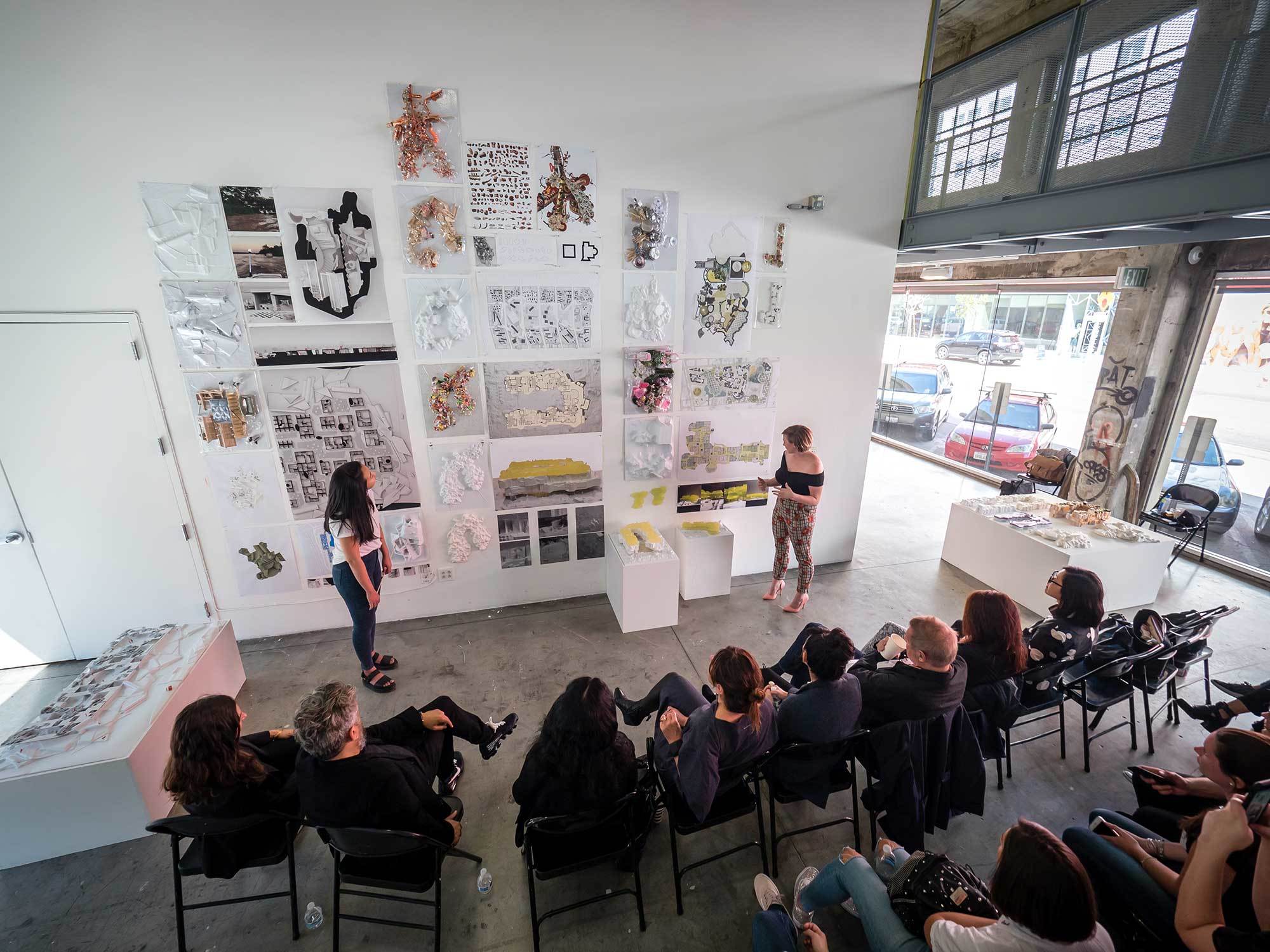
“SCI-Arc is a place for ideas, and we are concentrating our B.Arch program on critical thinking, debate, and reviving oral traditions,” Wiscombe says. “We aim to promote and develop each student’s intellectual style.”
The spring 2018 B.Arch program was led by Undergraduate Thesis Coordinator Marcelyn Gow and Special Advisor Neil M. Denari, as well as Thesis Advisors Casey Rehm, Marcelo Spina, Peter Testa, and visiting advisor Ferda Kolatan. B.Arch students presented their final projects on Friday, April 20, and on the following day several students were recognized at a special award ceremony. Two students—Isabela De Sousa and Karim Saleh—were awarded the Blythe and Thom Mayne Undergraduate Thesis Prize, and Thesis Merit Award winners were Rishab Jain, Brandon Lim, Luciano Menghini, Andreina Pepe, Andrea Sanchez, and Sarah Se.
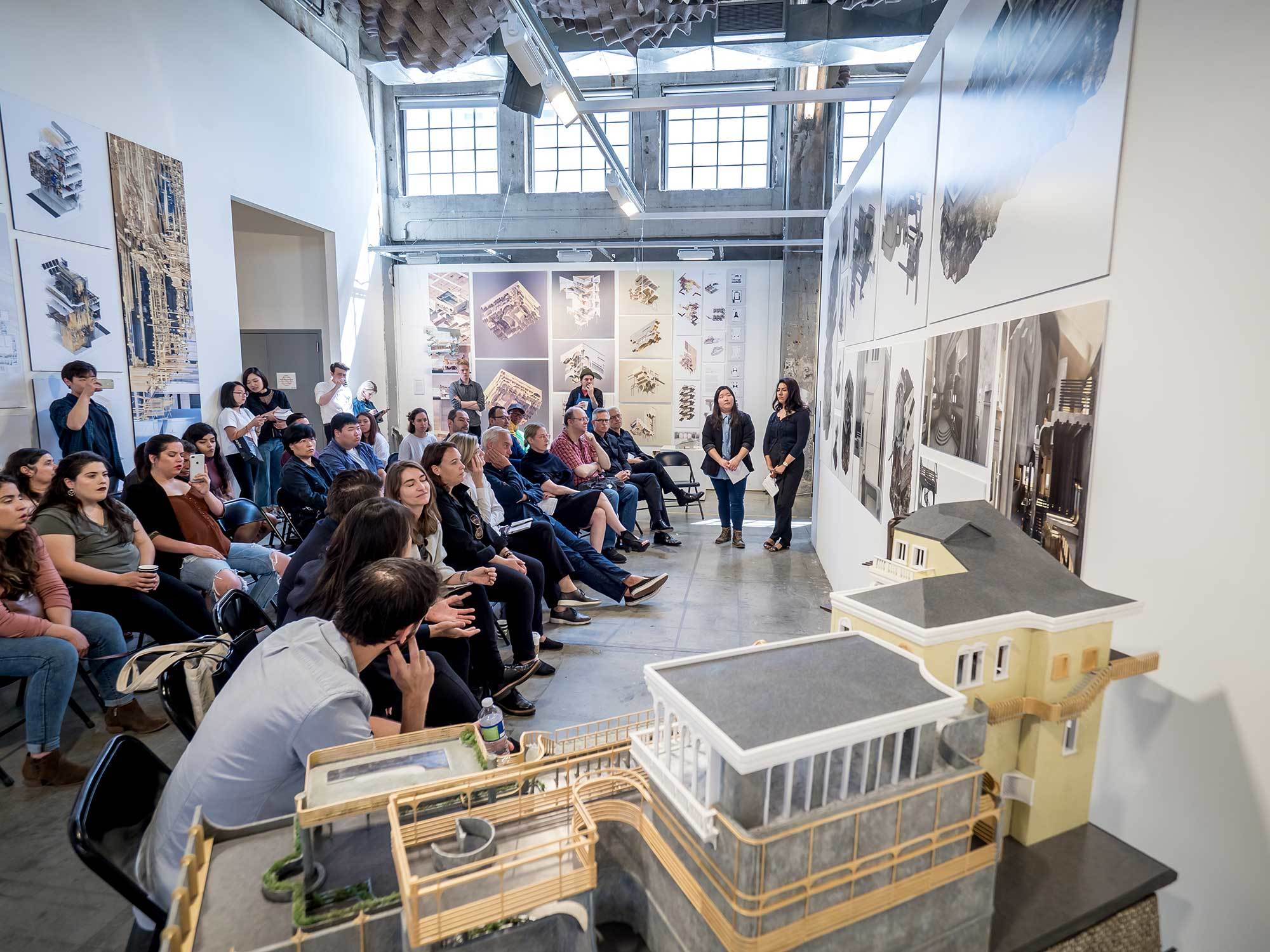
Andreina Pepe and Andrea Sanchez’s project for the adaptive re-use of an existing Venetian Palazzo as a school of architecture raises questions regarding authenticity and history. The accretion of new layers of material onto the building facade and into its interio, produces a double reading of the architecture as something that is both contemporary but also old. The rusticated quality of the new layer challenges the ornamental aspects of the existing building and produces the impression that the building has multiple histories.
Isabela De Sousa works with a proliferation of vaulted forms in order to produce a building that negotiates between being understood as massive and filigree simultaneously. The project has a programmatic duality, requiring a mixed-use program of residential units above an auditorium. This duality drives the formal strategy as the vaulting yields a more open and porous lower level for the gathering space and becomes fenestration and arcades that punctuate the more enclosed upper portion of the building accommodating the residential units. The architecture appears to levitate within its site.
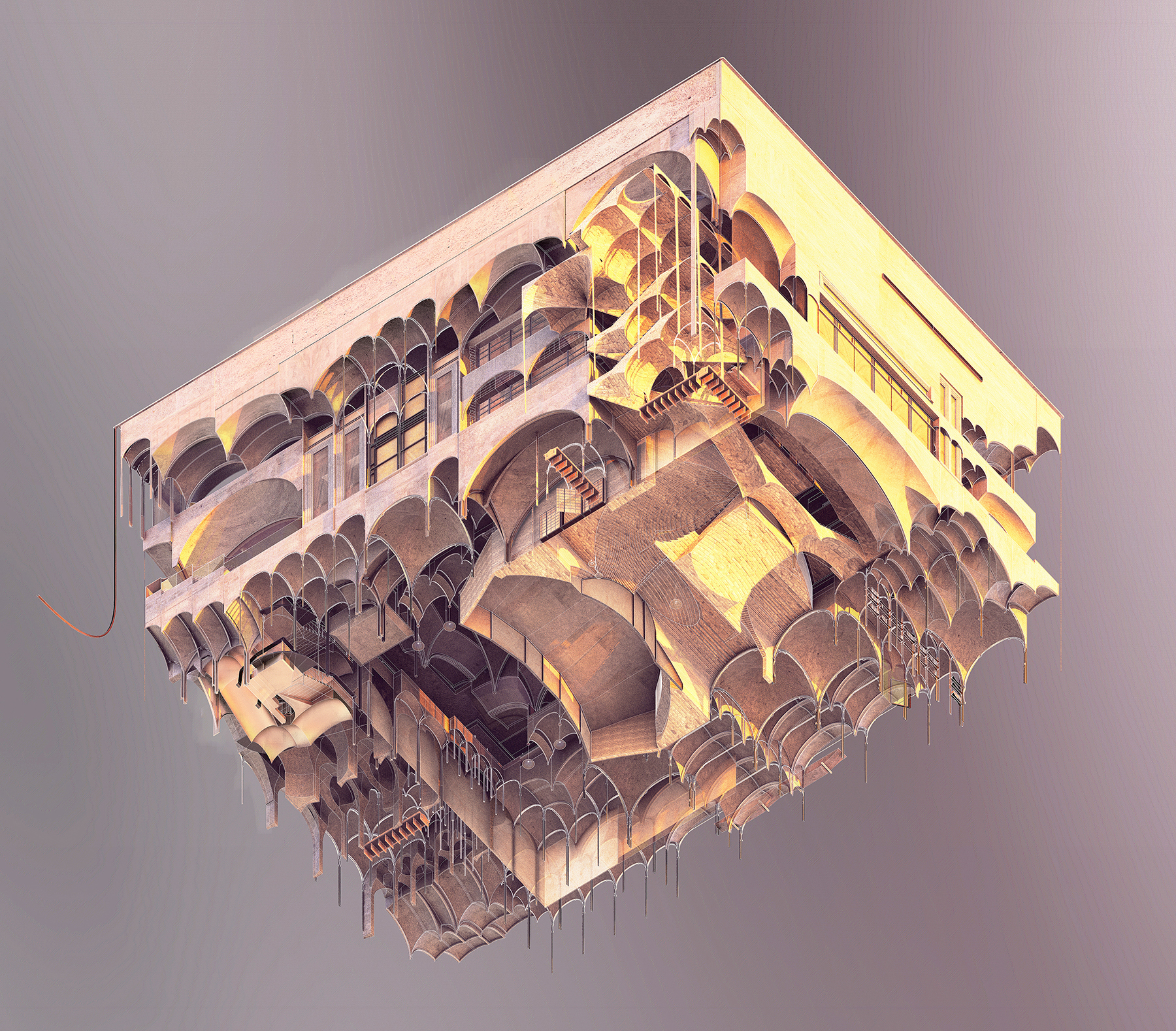
The LA River is the site for Jesus Chavez’s architectural intervention. The project’s infrastructural qualities are intermingled with moments where architectural elements become discernable and then merge with more ambiguous machinic parts. The project is a hybrid object that defers immediate legibility and creates a new way of seeing the context of the LA River.
Karim Saleh’s project for a Music Center in London is comprised of two distinct architectural constituents - the wall and the hall. The wall is transformed into an occupiable space through which programs ancillary to the concert hall are interlaced with the building’s primary circulation system. The hall becomes convoluted with the circulation system, maintaining a tenuous balance between being integrated into the larger whole or remaining detached from it.
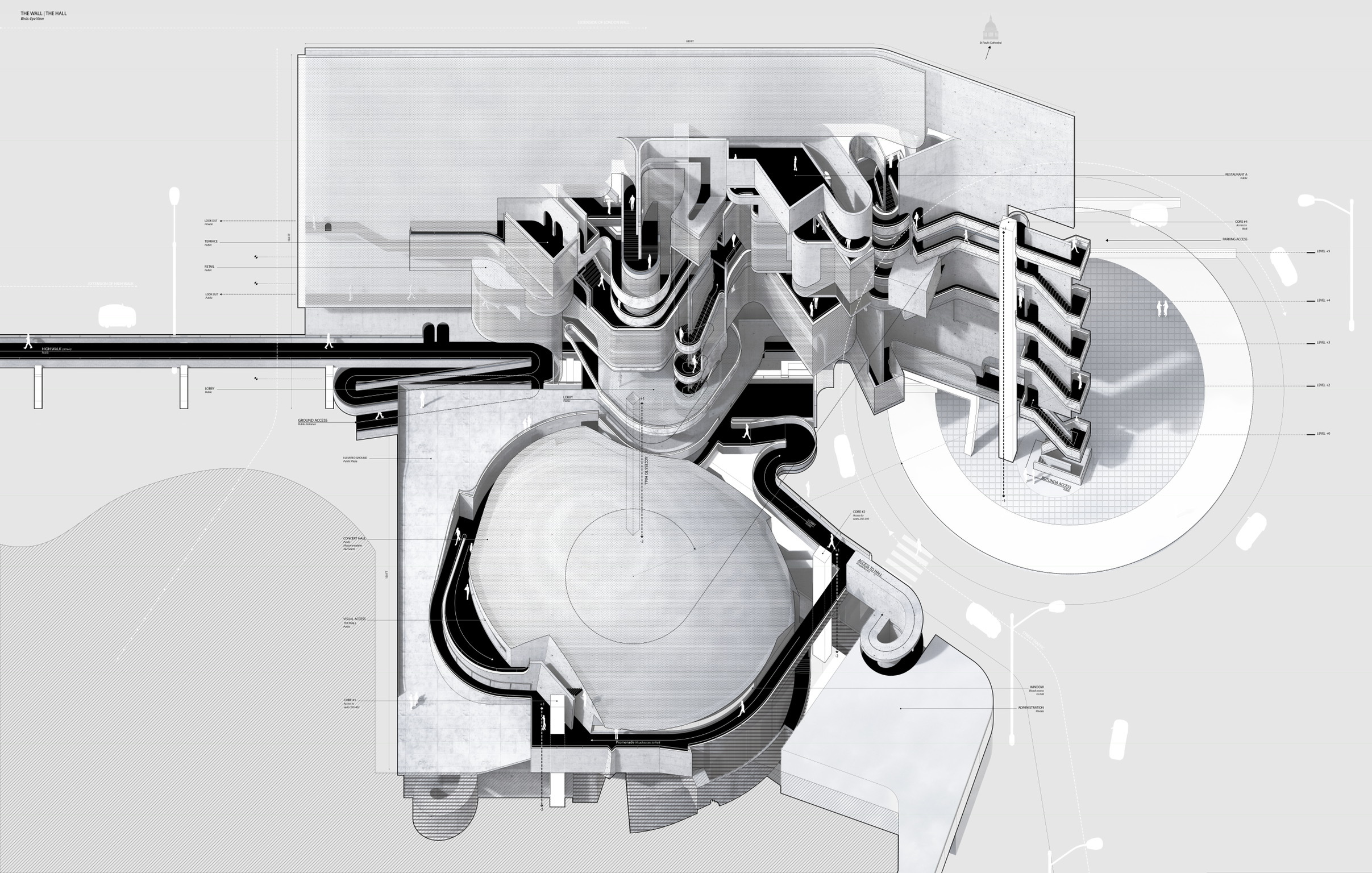
Rishab Jain’s design process for a mixed use facility utilizes the structure of an artificial intelligence game in order to produce an accumulation of layers of information derived from architectural plans. This image-based information is translated into three dimensions as a highly striated building mass. The striations act as both tectonic and structural elements in the project and produce the implication that the building is continuously in the process of completing itself.
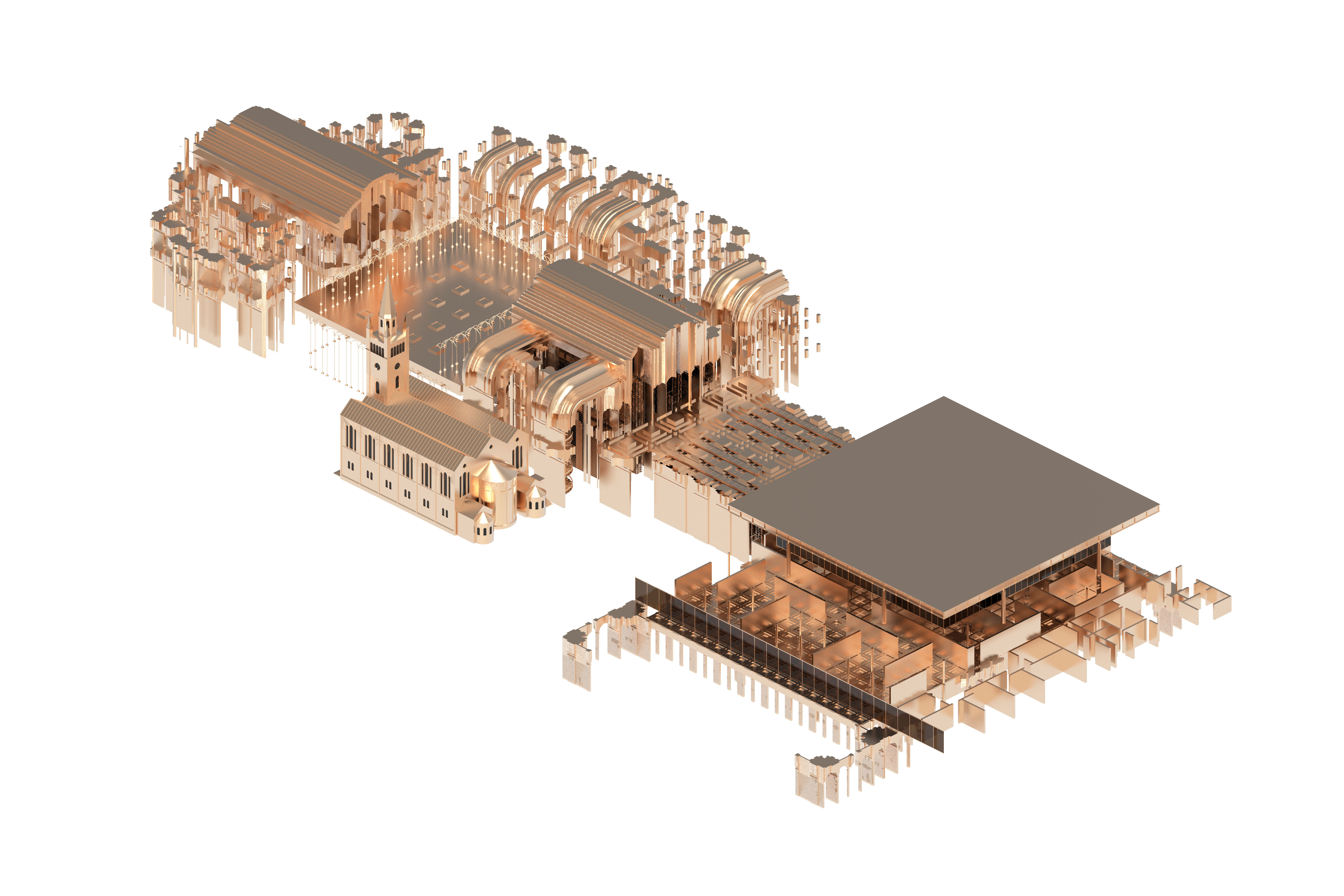
The Museum of the Twentieth Century in the Berlin Kulturforum is the program for Sara Segura’s thesis. The project is comprised of extruded masses and a series of arches and partial arches, producing a hypostyle hall. The architectural language of the museum, having affiliations with both hypostyle halls and courtyard typologies, creates a productive friction with its immediate context.
Luciano Menghini’s project for The Museum of the Twentieth Century in the Berlin Kulturforum amplifies the corridor typology in order to rethink the classical enfilade organization of a museum. A diverse array of corridor junctures produces a multitude of ways for visitors to encounter the contents of the museum as well as the site within which it is located.
Graduate studios explored a variety of themes from technology to materiality and massing. Led by Matthew Au, Margaret Griffin, Alexis Rochas, and Zeina Koreitem, the graduate level 1GB studio examined the complexities of the diptych and symmetry as a compositional logic for conceiving projects. The 2GBX studio juxtaposed well-known architectural forms with natural and synthetic materials that can be applied to both exterior envelopes and interior surfaces. Students produced a series of massing studies and ultimately created concepts for a mixed-use development as part of the downtown Los Angeles Flower Market.
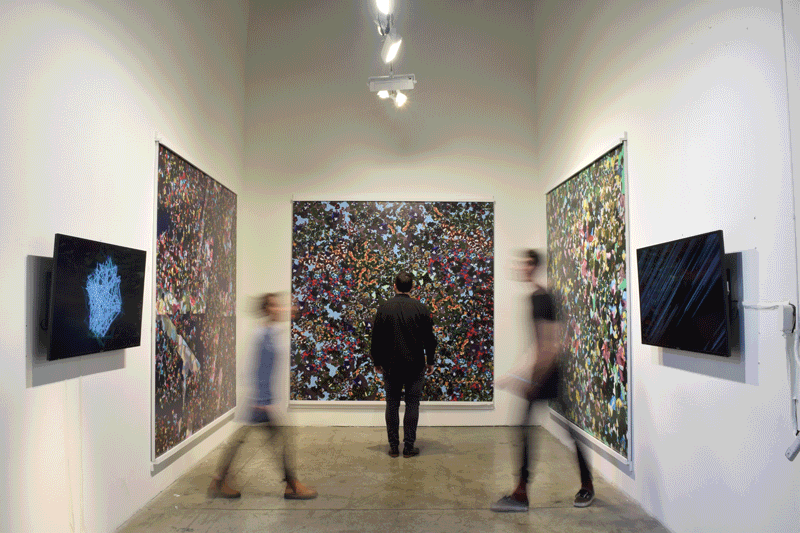
Complementing this studio, the three-week 2GBX Visual Studies seminar was led by faculty member Ryan Tyler Martinez and Casey Reas, one of the co-founders of Processing, an open source computer programming language built for the electronic arts, new media art, and visual design communities. Students learned advanced 3-D modeling techniques using Zbrush and Rhino.
Undergraduate and graduate students benefited from the expertise and insight provided by guest lecturers working both within and outside of the architectural profession. Michael Fried—poet, art critic, literary critic, and historian—led an undergraduate Liberal Arts Masterclass on topics presented in his pivotal collection of essays and reviews, “Art and Objecthood.” Fried also delivered a lecture in which he offered a surprising reading of photographs by Thomas Struth in relation to Immanuel Kant’s text on aesthetics, “The Critique of Judgment.” And Mark Wigley—a historian and theorist who explores the intersection of architecture, art, philosophy, culture, and technology—served as a graduate thesis advisor.
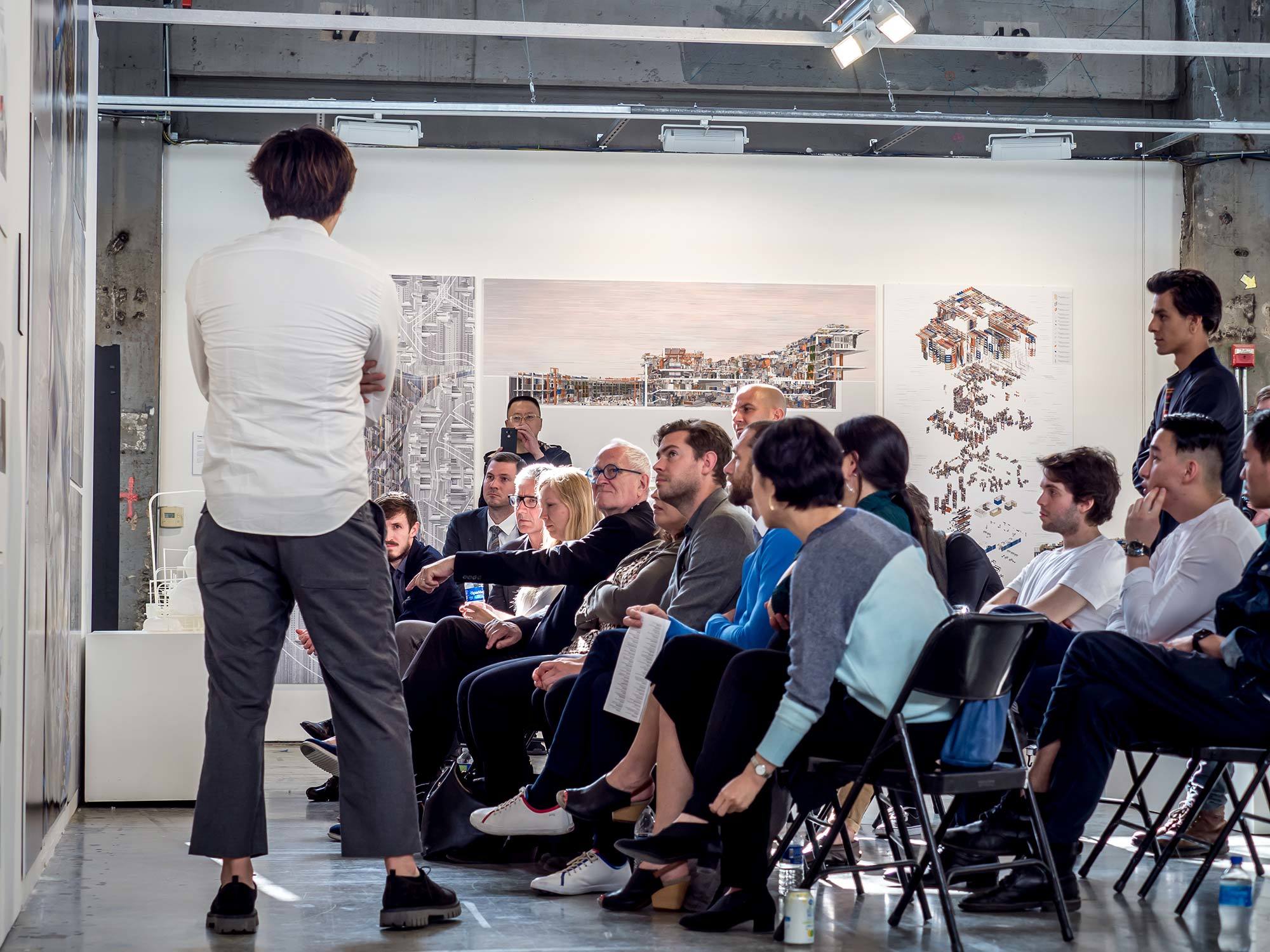
“This year I saw many students making new worlds that were maniacally detailed, enchanting, and almost alive,” Wiscombe says. “If you compare current thesis projects to those from 10 years ago, there is no doubt that the school has shifted from a model focused on the virtuosity of tools to an entirely new intellectual and aesthetic milieu. I'm curious to see how new forms of speculative realism will develop and how they will crash into the banality of the everyday. Let's see what's next!”